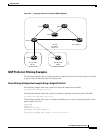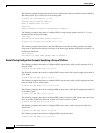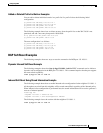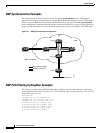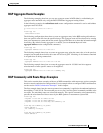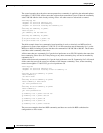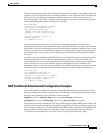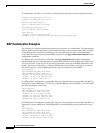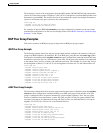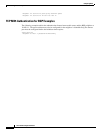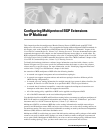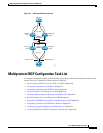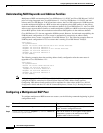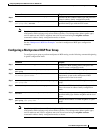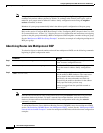
Configuring BGP
BGP Configuration Examples
IPC-345
Cisco IOS IP Configuration Guide
The following is a part of the configuration from the BGP speaker 200.200.200.205 from autonomous
system 701 in the same example. Neighbor 171.69.232.56 is configured as a normal eBGP speaker from
autonomous system 60000. The internal division of the autonomous system into multiple autonomous
systems is not known to the peers external to the confederation.
router bgp 701
neighbor 171.69.232.56 remote-as 60000
neighbor 200.200.200.205 remote-as 701
For examples of how the BGP set-community route-map configuration command can be used with a
confederation configuration, see the last two examples in the section“BGP Community with Route Maps
Examples” in this chapter.
BGP Peer Group Examples
This section contains an iBGP peer group example and an eBGP peer group example.
iBGP Peer Group Example
The following example shows how the peer group named internal configures the members of the peer
group to be iBGP neighbors. By definition, this is an iBGP peer group because the router bgp global
configuration command and the neighbor remote-as router configuration command indicate the same
autonomous system (in this case, autonomous system 100). All the peer group members use loopback 0
as the update source and use set-med as the outbound route map. The example also shows that, except
for the neighbor at address 171.69.232.55, all the neighbors have filter list 2 as the inbound filter list.
router bgp 100
neighbor internal peer-group
neighbor internal remote-as 100
neighbor internal update-source loopback 0
neighbor internal route-map set-med out
neighbor internal filter-list 1 out
neighbor internal filter-list 2 in
neighbor 171.69.232.53 peer-group internal
neighbor 171.69.232.54 peer-group internal
neighbor 171.69.232.55 peer-group internal
neighbor 171.69.232.55 filter-list 3 in
eBGP Peer Group Example
The following example shows how the peer group named external-peers is defined without the neighbor
remote-as router configuration command, making it an eBGP peer group. Each member of the peer
group is configured with its respective autonomous system number separately. Thus, the peer group
consists of members from autonomous systems 200, 300, and 400. All the peer group members have
set-metric route map as an outbound route map and filter list 99 as an outbound filter list. Except for
neighbor 171.69.232.110, all have 101 as the inbound filter list.
router bgp 100
neighbor external-peers peer-group
neighbor external-peers route-map set-metric out
neighbor external-peers filter-list 99 out
neighbor external-peers filter-list 101 in
neighbor 171.69.232.90 remote-as 200
neighbor 171.69.232.90 peer-group external-peers
neighbor 171.69.232.100 remote-as 300
neighbor 171.69.232.100 peer-group external-peers
neighbor 171.69.232.110 remote-as 400



